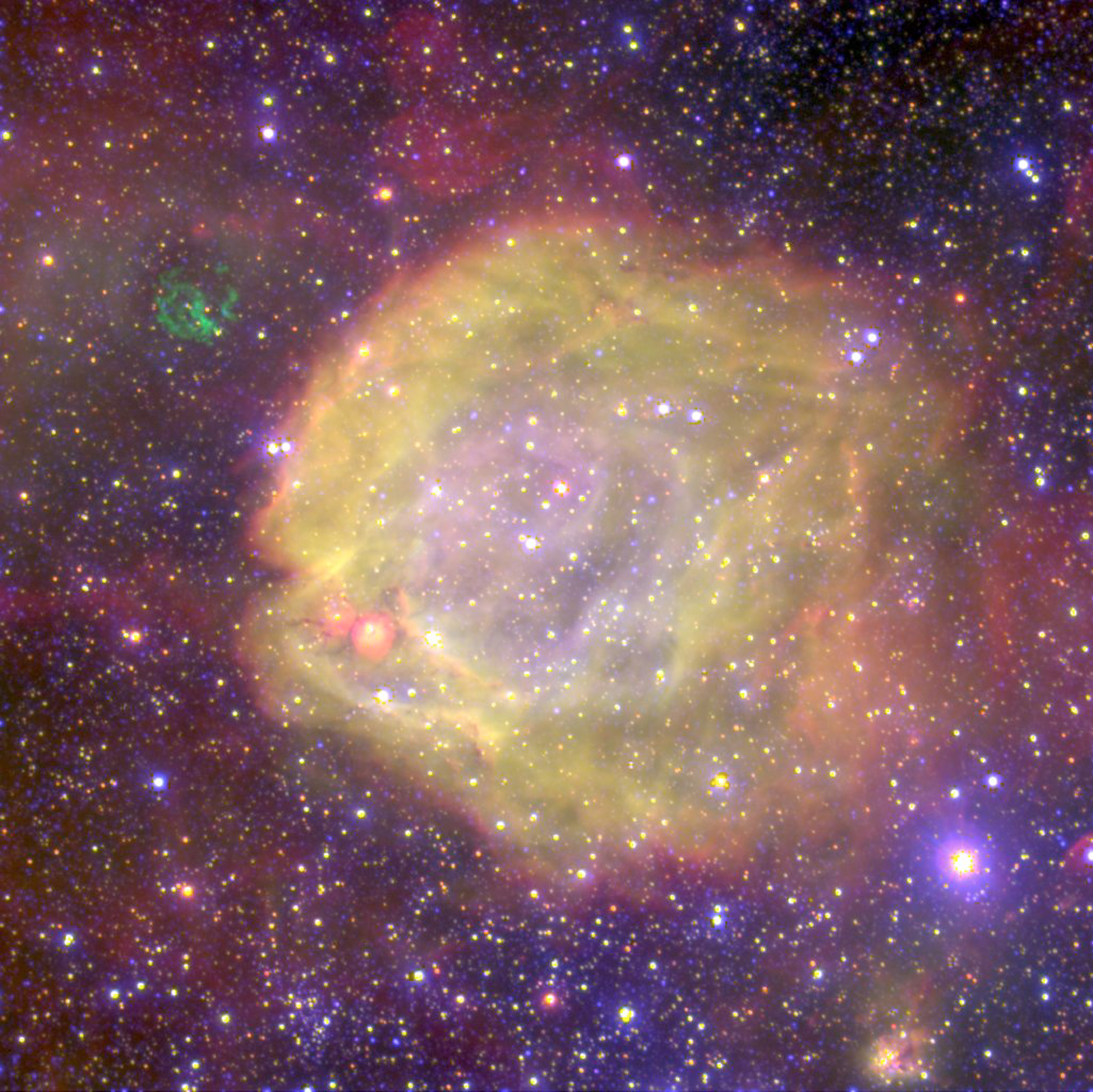Wolf–Rayet Nebula on:
[Wikipedia]
[Google]
[Amazon]

 A Wolf–Rayet nebula is a
A Wolf–Rayet nebula is a

 A Wolf–Rayet nebula is a
A Wolf–Rayet nebula is a nebula
A nebula ('cloud' or 'fog' in Latin; pl. nebulae, nebulæ or nebulas) is a distinct luminescent part of interstellar medium, which can consist of ionized, neutral or molecular hydrogen and also cosmic dust. Nebulae are often star-forming regio ...
which surrounds a Wolf–Rayet star
Wolf–Rayet stars, often abbreviated as WR stars, are a rare heterogeneous set of stars with unusual spectra showing prominent broad emission lines of ionised helium and highly ionised nitrogen or carbon. The spectra indicate very high surface ...
.
WR nebulae have been classified in various ways. One of the earliest was by the nature and origin of the nebula:
* HII regions
* ejecta-type nebulae
* wind-blown bubbles
This classification requires detailed study of each nebula and more recent attempts have been made to allow quick classification of nebulae based purely on their appearance. WR nebulae frequently are ring-shaped in appearance, possibly spherical. Others are irregular, either disrupted shells or formed from clumpy ejection.
Examples of this type of nebula include NGC 6888, NGC 2359, and NGC 3199. Some WR nebulae have a prominent spiral structure, for example the WR 104, formerly securing them with the categorization of pinwheel nebulae.
References
Nebulae {{nebula-stub